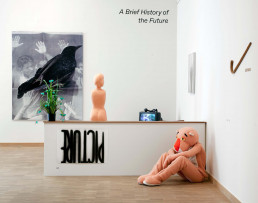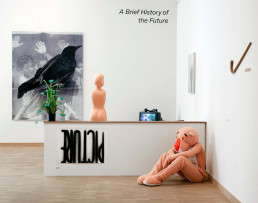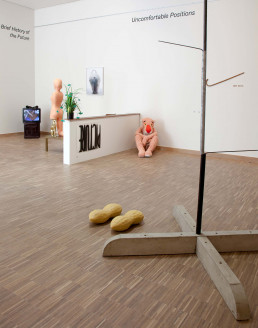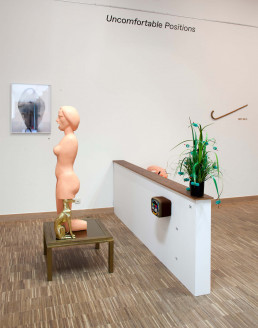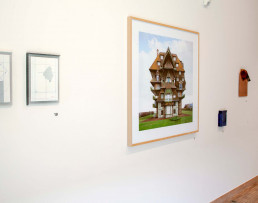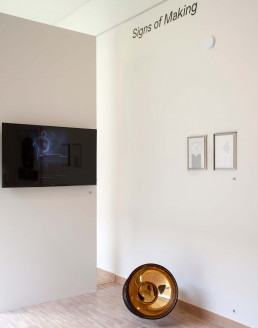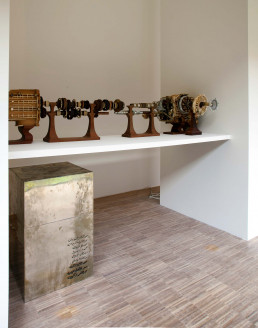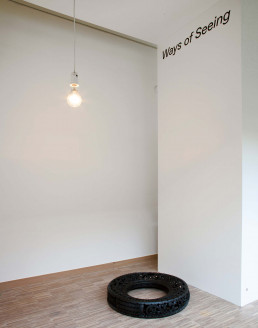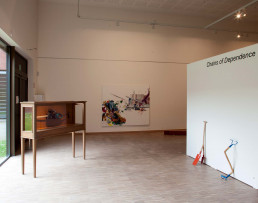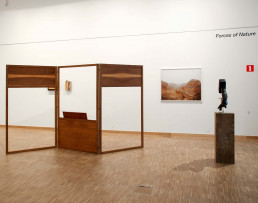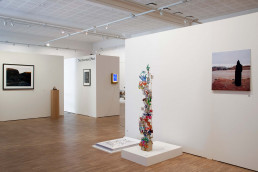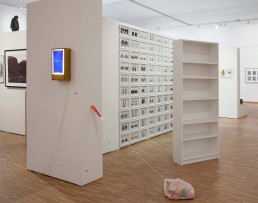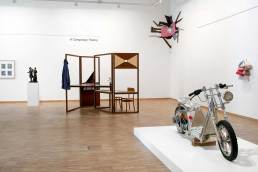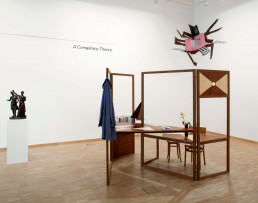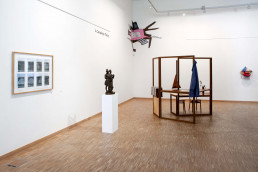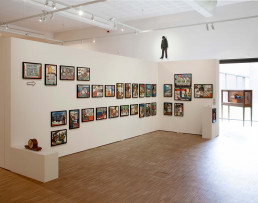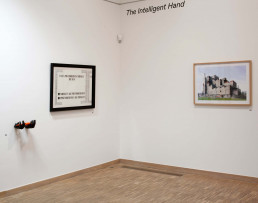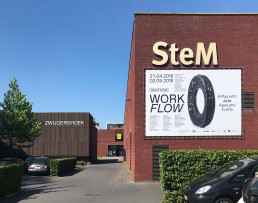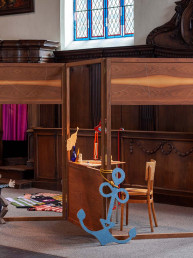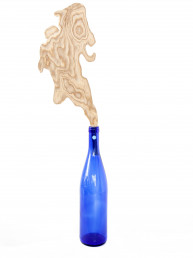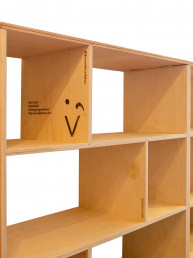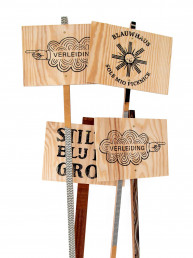WORK FLOW exhibition
ArtistWim Wauman (curator)TitleWORK FLOW - A Play with Apes and CraftsYear2018MaterialsInstallation (artworks by 50 artists and makers)
The whimsical contours of the WORK FLOW project were shaped by its initiator Wim Wauman, in the context of his PhD research in visual arts at the Royal Academy of Fine Arts Antwerp.
Inspired by a literature study of craftsmanship, the artist explores the notion and potential of ‘craft’ as a way of making, which offers an alternative set of values to those of industrial production, global capitalism and mass consumerism. Craftsmanship is regarded as an attitude characterized by self-reliance, social involvement and a constant striving for quality.
Along the path of discovery, every certainty is turned into a question. Material is not known for what it is, but by what it does specifically when mixed with other materials, treated in particular ways, or placed in particular situations. As each artwork involves more than one voice, the author of a text is not the sole authority on its meaning. A word, chosen for one reason, brings with it additional layers of meaning. In A Play with Arts Apes and Crafts, Wim Wauman envisions a playful artistic-academic scenario edited and arranged to illuminate the works in the WORK FLOW exhibition.
Inspired by a literature study on craftsmanship and guided by his idiosyncratic imagination, the artist interweaves references to popular culture with numerous citations from academic publications, sociological studies, philosophic treatises and internet websites. Through quotes and questions, insights and opinions, Wauman shares his pursuit of knowledge, while blending in his artistic interests and personal concerns. It is a creative exercise in the development of an intellectual craftsmanship. An imaginative tangle of concepts, images and signs. A puzzle*.
A publication accompanied the WORK FLOW exhibition at the Cultural Centre of Sint-Niklaas (April 21st – Sept 2nd 2018). A first volume (32p, leporello) visualized and documented the sequential presentation of nearly 100 contemporary artworks by an international assortment of artists. In the second volume ‘A Play with Arts Apes and Crafts’ (96p, reader) all artworks were reconnected with their makers. Additionally, all works were placed in an idiosyncratic composition of shared knowledge, through the results of a playful exercise in artistic and intellectual craftsmanship.

